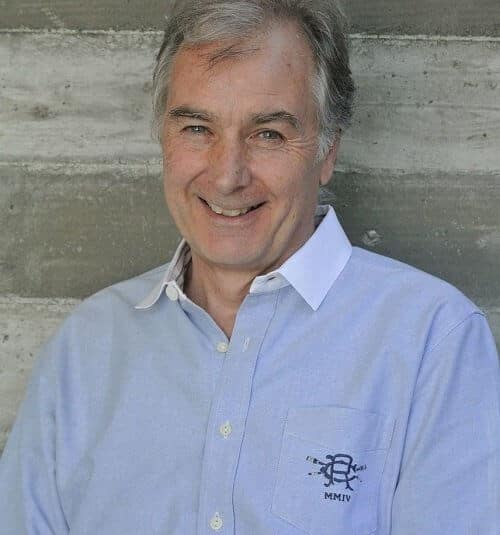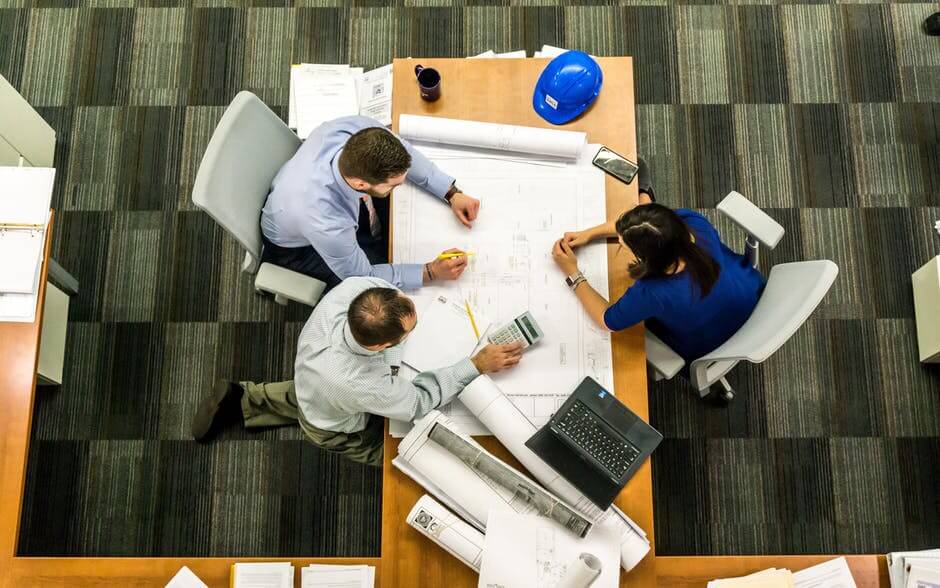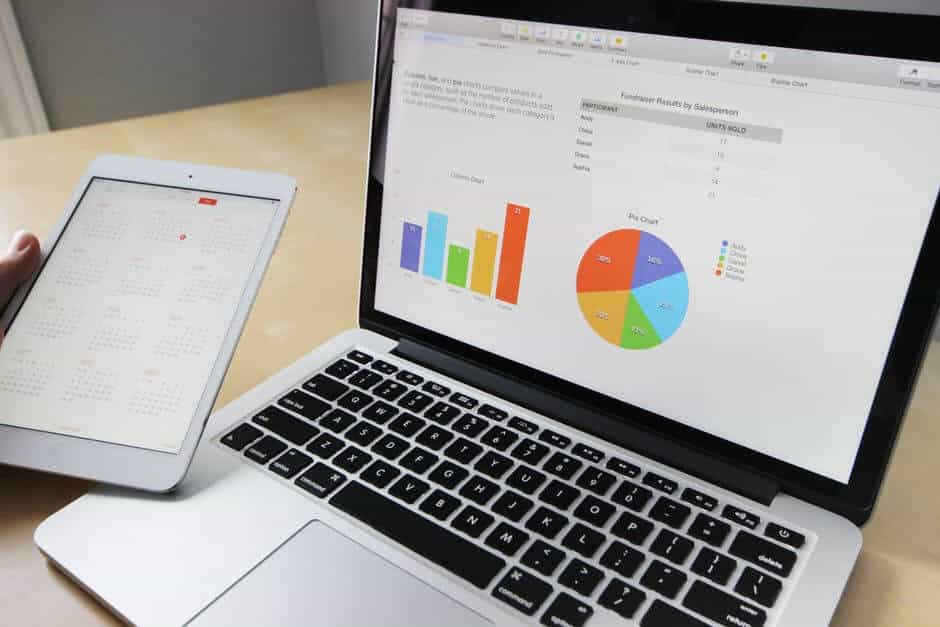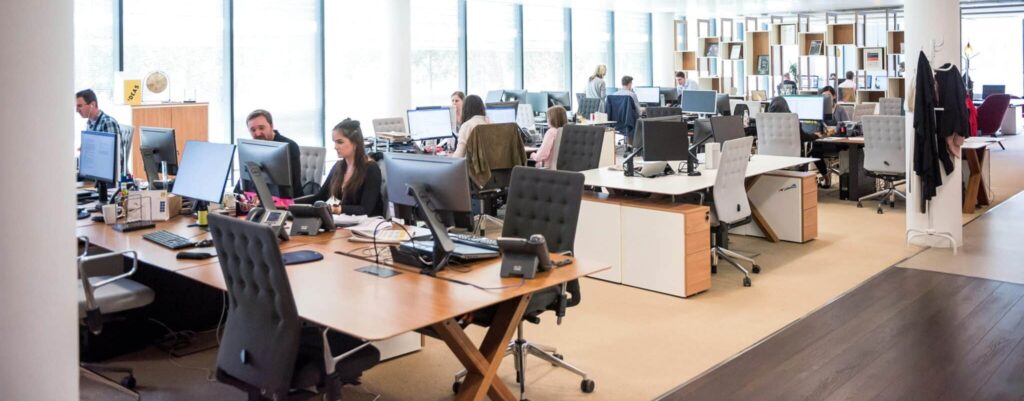Mobile Mindsets in the Evolving Workplace

Are agile working and coworking spaces going to become the new workplace norm? Advanced Workplace Associates (AWA) Director Chris Hood gives us his insights.
The workplace has seen some dramatic changes since Chris Hood first began to challenge the prevailing paradigms of office design in the technology industry in the early 1980s. Since then, Chris has served as a Program Manager for HP’s Workplace Program and a Managing Director of Workplace Innovation for CBRE.
Chris recently became the Director of Advanced Workplace Associates (AWA) and is helping the team advance and grow its reputation as a leader in workplace thinking. Chris and AWA are doing so through using their research-based approach to assist organizations address their largest and most urgent business challenges.
In a May 2017 blog post on the AWA website, it speaks to the difference between agile working and flexible working. Why do you think it is important to make a distinguishment between these two terms?
Chris: One has to be very careful with terminology. In software development for example, there’s a term called “agile design.” It refers to a methodology of building software in a way that’s predictable and incremental — a process that engineers go through to create product. It’s very different from the “agile” that is referred to by workplace strategists.
Agile working in a workplace context refers to the dexterity of workers to make spur-of-the-moment choices as to where, when and with whom they work. This activity based approach has been proven to generate great results when well-deployed and is the foundation of much workplace thinking today. This is not universally known as “agile,” however. In North America, there is a tendency to refer to this by other names such as flexible working, which can also refer simply to the times when one works, or alternative workplace strategy.
Our world of workplace is littered with people calling the same thing different names, sometimes causing confusion. To avoid misunderstanding, it’s really important when one is engaged in a project that everybody involved uses the same terms and definitions. It almost doesn’t matter what that language is, as long as it’s consistent and clarity is reached up front as to what they mean.
In basic intent, the two terms mean the same thing but are, in my view, slightly nuanced. “Flexible working” refers to the notion of working not only within the office, but also outside the office and a lot of other different places. “Agile working” is the same thing, but there is a subtle sense that it’s more about mobility within the office. We’re not all sitting at desks, we’re moving around, using formal and informal collaboration spaces, going to meetings, going to the cafe or some social hub. When we generally talk about “agile working,” in a non-software development sense, that’s what we are referring to. It is important to understand, however, that there are those who might choose to offer a slightly different view as to these understandings — which is my point.

What successful workplace changes have you seen in agile working environments and how were they done?
Chris: Perhaps the biggest idea here is the fact that people don’t belong to a desk anymore. What they’re effectively doing is belonging to a neighbourhood or a community within a workplace they can call home — but it’s not a desk.
With enabling qualities of technology these days, people can work in a whole range of different places very effectively… and they do. When I was working for HP, we were doing utilization studies that showed that the average office was used somewhere between 35 and 40 percent of the time. That means 60 to 65 percent of the space was empty at any given point in time and yet it’s being paid for 100 percent of the time. This utilization rate, as outlandish as it might seem, is not uncommon and is in fact very normal.
By going to a free address environment where one provides desks based on the anticipated demand, not the headcount, you begin to free up space to do other things. You can build more collaboration spaces instead of desks. Because you are consuming less square feet, you can also afford to invest more in the unit cost of the workplace. By investing intelligently in the workplace, one can effectively “afford” a better workplace experience.
The successful projects are those that get the balance right. They haven’t driven footprint reduction so hard that it’s overbusy and people can’t find a seat, but they have taken a portion of their savings and reinvested it in better space, better technology and improved office services.

What measurements are used to know if an agile working environment is functioning properly?
Chris: It’s an easy question to ask, but much more difficult to answer. At its heart, the measurement of the workplace should link back to strategic business goals and objectives. That’s not the way it works for most today. Most real estate organizations tend to stay in their comfort zone and measure things they have under their direct control such as the size of the footprint, the running costs and the headcount accommodated. These three measurements create good, and reasonably well understood, measures of efficiency. They do not, however, address the effectiveness measures which are arguably the most important, since they refer to the overall outcomes of their people, who typically represent about 80 percent of an organization’s cost as opposed to 10 percent for real estate.
One thing I strongly believe is that those organizations that create the best, most creative, measures of success will have the most successful outcomes. By understanding what success looks like ahead of any project is an enormous benefit. It allows for better decision-making relative to where investments are made and gives all project implementers a compass by which to assess project decisions. Imagine a part of a project manager’s evaluation being based on whether the employee attraction and retention metrics improved. It certainly improves upon “schedule and budget!”
Only by creating skin in the game for all responsible for implementation will see the right priorities assigned to investments and decision-making. The fact that it is quite tough to measure many of the “soft” measures should not stop us from trying. Yes, we know that there are many different things that affect employee engagement, employee retention rates, teamwork etc., but unless there is an holistic “buy-in” from everyone, including the businesses themselves, we will always find ourselves talking at cross purposes and never really delivering the workplace instrument the business needs to be successful.

With agile working, flexible working and activity based working coming into play, the workplace needs to be very fluid. How do these strategies translate into the physical office environment?
Chris: In the past, if I had 100 people and 100 desks, the minute I hire one more person — I am unable to accommodate that person. In an activity based environment, one might have, for example, 100 people assigned to 60 work stations in the belief that there’s only 50 percent of them there at any given time. In this situation, one can imagine adding more staff up until the point that there are times when finding an empty desk becomes a bit more of a challenge. This ratio of desks to staff will depend on what these people do, what level they are at, how much supervision they need, what teamwork looks like in this organization and whether there are any other physical requirements such as fixed IP addresses, disability criteria or other factors which might influence the ratio.
Desks are only the start. The very best workplaces offer a range of different space types included in some likely proportion to the expectations of use. These other workplace components range broadly from a focus on individual work — private spaces to think, work and act — to collaborative spaces — spaces to meet, share ideas, information and develop team activity. Furthermore, these diverse space types become further influenced by other criteria: the culture of the organization and its members and their needs, preferences and attitudes.
The articulation of these spaces and their sequencing will provide further clues to culture, mission, dexterity and their ability to keep reinventing themselves to keep up with the changing world around them.

What are your predictions for the workplace and what it’ll look like in the next five to ten years?
Chris: To answer this, one needs to understand the factors which might influence the workforce itself over the next five to ten years. All the evidence points to the number of people who work for large organizations, the traditional understanding of how people are employed, dropping over time.
As businesses work to reinvent themselves, they are looking at different, more flexible, models of staffing which will impact the way they need to think about the workplace. There are several large companies who have released many of their highly-paid specialized staff only to hire them back on a project-contracted basis. This is happening a lot. For the business, this allows them to pay for these staff only when they have an established need for their services. For the employee, there are possible wins also in more flexible working arrangements like real choice as to when, where and for whom one works.
What are the workplace consequences of this? If one puts themselves in the position of the hiring company, I’m going to have to think long and hard about what I have to do to make sure that I can engage this flexible workforce when I need them. That demands a workplace that is very attractive to top talent. One needs to be able to bring someone onboard very quickly and make them feel part of the team. They need to get productive right away because they are paying a premium price for their services and it needs to be very responsive to new hires.
I also think the coworking model is blasting a hole through traditional thinking about workplace. More and more organizations are building coworking centres within their organization because they like the benefits. There is more facilitation of people, they’re more fun, there’s more choices and it doesn’t feel like work necessarily. The world of work is going to look a lot more like coworking centres, the good parts of coworking centres — not only in terms of workplace experience, but because they offer the kind of flexibility that is required for a dynamic project-based workforce.
To find out more about how Chris and Advanced Workplace Associates can help your organization, visit their website.
What kind of impact do you think agile working has on the workplace? How do you think it will evolve? Share your thoughts in the comments below.
Photos: Pixabay, Squarespace, Lukas




